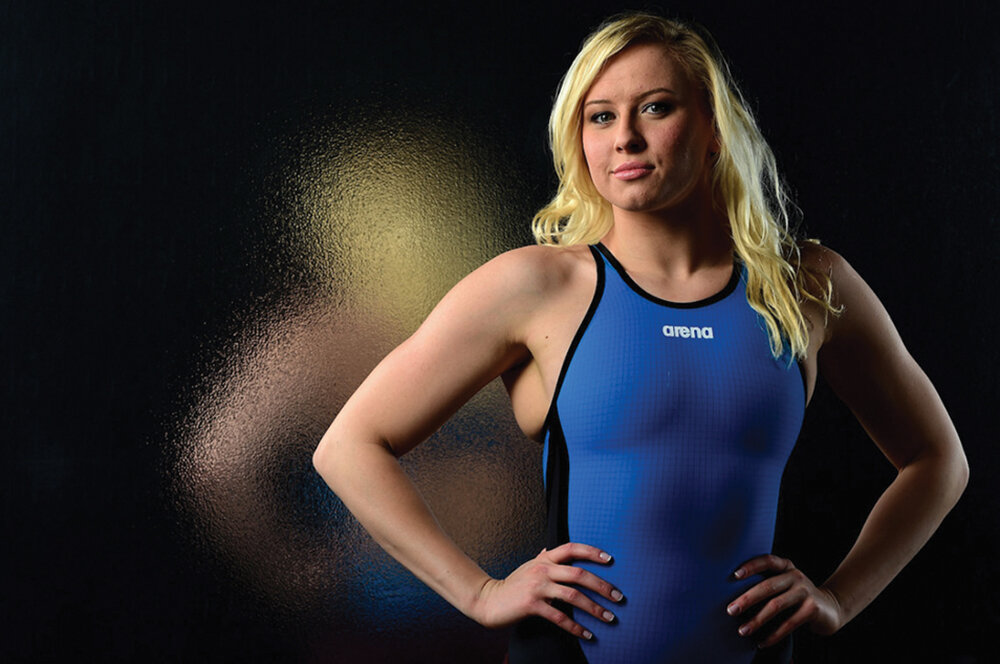Tap Into Olympic Mindset
To enhance leadership skills
By John Engh
Photos: Courtesy of NAYS
Growing up in the 1970s and 1980s, I really appreciated the Olympics—particularly the Summer Olympics. There were so many life-changing events connected to the Games, which brought the best athletes in the world together every four years.
Jessica Long
I was 8 years old in 1972 when the Munich Olympics took place, and I distinctly remember watching the horror unfold on TV when the hostages were killed and the sadness of Jim McKay as he reported the details on ABC. I also remember the disappointment I felt when the United States boycotted the 1980 Olympics in Moscow. I couldn’t imagine the frustration all those athletes felt who had literally trained most of their lives for a moment that would never come.
But since that time, there have been so many great heroes emerging from the Olympics, from Mary Lou Retton to Simone Biles, Mark Spitz to Michael Phelps; all the track stars, including Carl Lewis, Florence Griffith Joyner, and Michael Johnson; the Dream Team in basketball, and on and on it goes. Besides being gifted athletes, these “greats” utilized powerful mindsets and a relentless spirit to compete and succeed on the world stage.
Through the years, the National Alliance for Youth Sports has been fortunate to speak with some of these amazing Olympic athletes, and many have shared powerful perspectives we can all apply to be more productive and efficient in our lives and be better leaders of the youth-sports programs in our communities, too. So, in looking towards the upcoming Olympic Games in Tokyo, we can use the insights below from these Team USA greats to raise our performance levels:
Two-time Olympian and three-time track-and-field gold medalist Tianna Bartoletta: She developed her Code R.E.D. technique:
Reinforcing habits or skills that you want to keep sharpened
Eradicating habits or behaviors you don’t want
Developing brand-new habits, skills, or behaviors.
Here’s how it works: On a three-column chart, under “reinforce,” write down the current habits or skills you want to maintain; under “eradicate,” include the current habits you don’t want; under “develop,” write down the new habits or skills you want to learn.
Each day on which you successfully execute the Code R.E.D. plan, mark a big ‘X’ on the bad habits you’re leaving behind and a positive emoji on the areas you are reinforcing or developing.
“Writing it down really allows you to see areas where you can accomplish some of these things that you have been waiting on,” Bartoletta says. “I think as you tackle those things, you do end up generating positive momentum.”
Besides applying these concepts to your personal life, you can utilize them in youth programs. Consider the applications as a different approach for working with staff members on reinforcing positive components of programs while targeting and working on eliminating any areas of concern.
Three-time Olympic soccer gold medalist Christie Pearce Rampone: A mother of two, volunteer coach for youth basketball and soccer, and two-time World Cup champion, she urges those who oversee youth-sports programs to engage in open communication at all times. This helps promote an all-important atmosphere encased in trust and focused on the best interests of all the participants.
“It really comes down to trust,” she says. “Parents start to get emotional when they don’t feel like their child is in the right environment to succeed. When you can trust and respect the person in charge, you can see parents kind of loosening up a little bit.” So, we should take a step back and look at how we are presenting programs to the community; then pinpoint some ways to make the playing environment one in which parents see the genuine care that staff members have for meeting everyone’s needs.
Thirteen-time Paralympic swimming gold medalist Jessica Long: She notes how valuable the simple task of writing our goals down can be to keep us dialed into what we are looking to achieve. “I like seeing my goals written out,” she says. “When I’m training for the Paralympic Games that can be four years away, that is obviously the end goal, but in that four-year span, I have short-term goals to reach within a couple months.” So, as we’re embarking on a new season of youth-sports programming, writing out the department’s short-term and longer-term goals can be helpful reminders in keeping staff focused as they navigate their daily tasks.
Valerie Arioto
Olympic softball player Valerie Arioto: “I’m really big on self-care for high performance,” she says. “Am I aligning my everyday actions with my goals and where I want to be? So, it’s about really being aware.” As youth-sports leaders, we should remember these words. While the focus is on the youth in the community, and providing them with opportunities to engage in sports and build a foundation for leading healthy lives, we must make sure we are tending to our own needs, too. By leading healthy lives, we can be powerful role models for youth to follow and aspire to.
John Engh is executive director of the National Alliance for Youth Sports (NAYS) in West Palm Beach, Fla. He can be reached via email at jengh@nays.org. To join more than 3,000 communities by starting a NAYS Member Organization, visit www.nays.org, email nays@nays.org or call (800) 729-2057.




